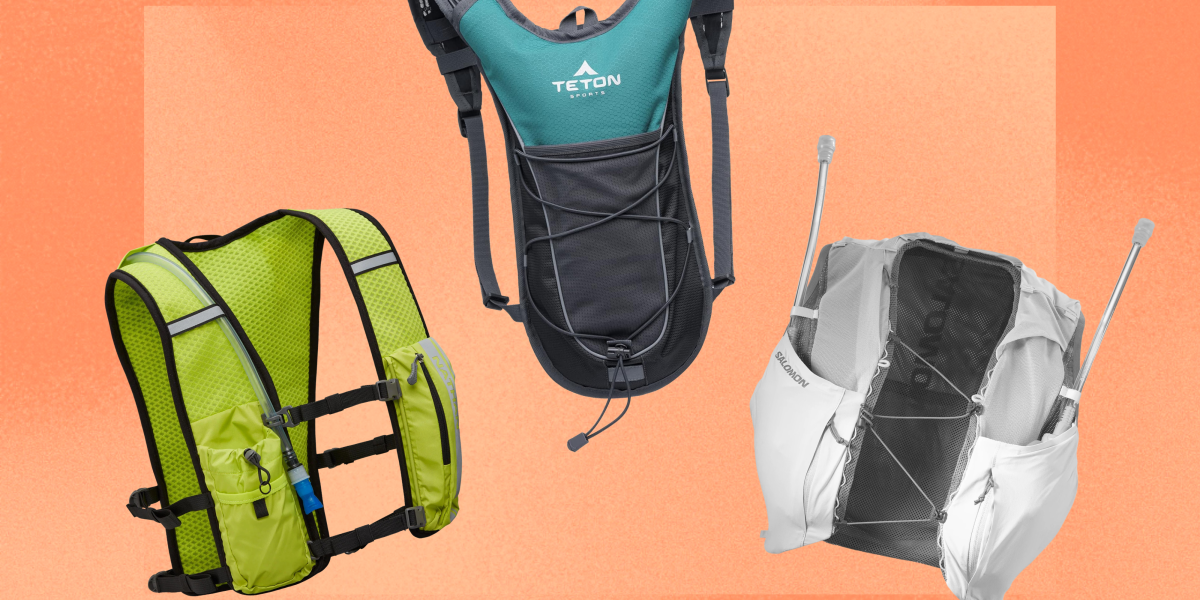Staying hydrated during any outdoor activity is key to feeling your best and keeping your body healthy all summer (and beyond). There are a ton of ways to carry water, but if you’re running or hiking, you’ll want to choose a vessel that minimizes bounces, has pockets to carry your essentials, and comfortably holds enough H2O. Hydration systems (including belts, vests, handhelds, waist packs, and more) check all of those boxes—they’re designed with the active person in mind and are great for staying hydrated on the go. We asked several experts how to shop for the right option for your outdoor adventure.
How to choose the best hydration system for you
Type of Activity
Figuring out the best way to carry water is going to largely depend on your activity of choice. For anything like road and trail running, you’ll want a system that keeps your water and gear close to your body to cut down on bouncing. In that case, most runners opt for vests and belts.
If you’re hiking or walking, a daypack or waist pack should do just fine. You can stash a bit more into these, like snacks or even a lightweight raincoat, without having to worry as much about bulk.
For official races, always research what kind of hydration systems are allowed first. “A trail race might require that you run with a vest that fits a certain sized hydration bladder (also known as a reservoir), while a big city race might not allow backpacks or vests for safety reasons,” Ashley Mateo, a certified running coach based in Denver, tells SELF. If you plan on running with a permitted hydration pack, she recommends training with it prior to race day so you can get comfortable with how it feels beforehand.
Overall Fit
Fit really comes down to preference and performance. Ideally, vests or packs should be snug, so they don’t move around a ton or cause any chafing issues, Amanda Brooks, a UESCA-certified running coach and founder of RunToTheFinish tells SELF.
“Basically, you don’t want to wear anything that’s going to overly distract you or cause discomfort,” says Mateo, adding that she prefers a vest, because it distributes the weight evenly and keeps her hands free.
When testing out a vest, try carrying water in the front and back, and adjust the various straps to get the best overall feel for you.
Gear and Water Capacity
To determine adequate capacity for your hydration pack, consider “the distance, temperature, and intensity of the exercise you’re about to pursue,” Michael Hamlin, CSCS, and NSCA-certified personal trainer tells SELF. For instance, a four-liter vest may work well for shorter runs, while a 10- to 12-liter pack with pockets for snacks, trekking poles, and extra layers might be better for longer hikes. Most running vests will be able to carry anywhere from 0.5 liters of water to two liters, using either flasks, bottles, or a bladder.
“It’s better to carry a bit more water than you think you might need, especially in remote areas or during extreme weather conditions,” says Hamlin.
For your outside adventures, in general, aim for the following water intake:
- Short distance (2 to 5 miles): 12 to 20 ounces via a handheld or belt
- Medium distance (5 to 10 miles): 20 to 50 ounces (0.5 to 1.5 liters) via a small pack or vest for medium length runs, hot weather, or adventures with a dog
- Long distances (10+ miles): 50 to 100 ounces (1.5 to 3 liters) via a larger vest or day pack for longer runs in hot weather, or if there isn’t water restock available
The best hydration packs of 2023
Based on expert input, we choose the best hydration vests, packs, and belts from top brands like Salomon, Nathan, Gregory, CamelBak, and more.
All products featured on SELF are independently selected by our editors. However, when you buy something through our retail links, we may earn an affiliate commission.
